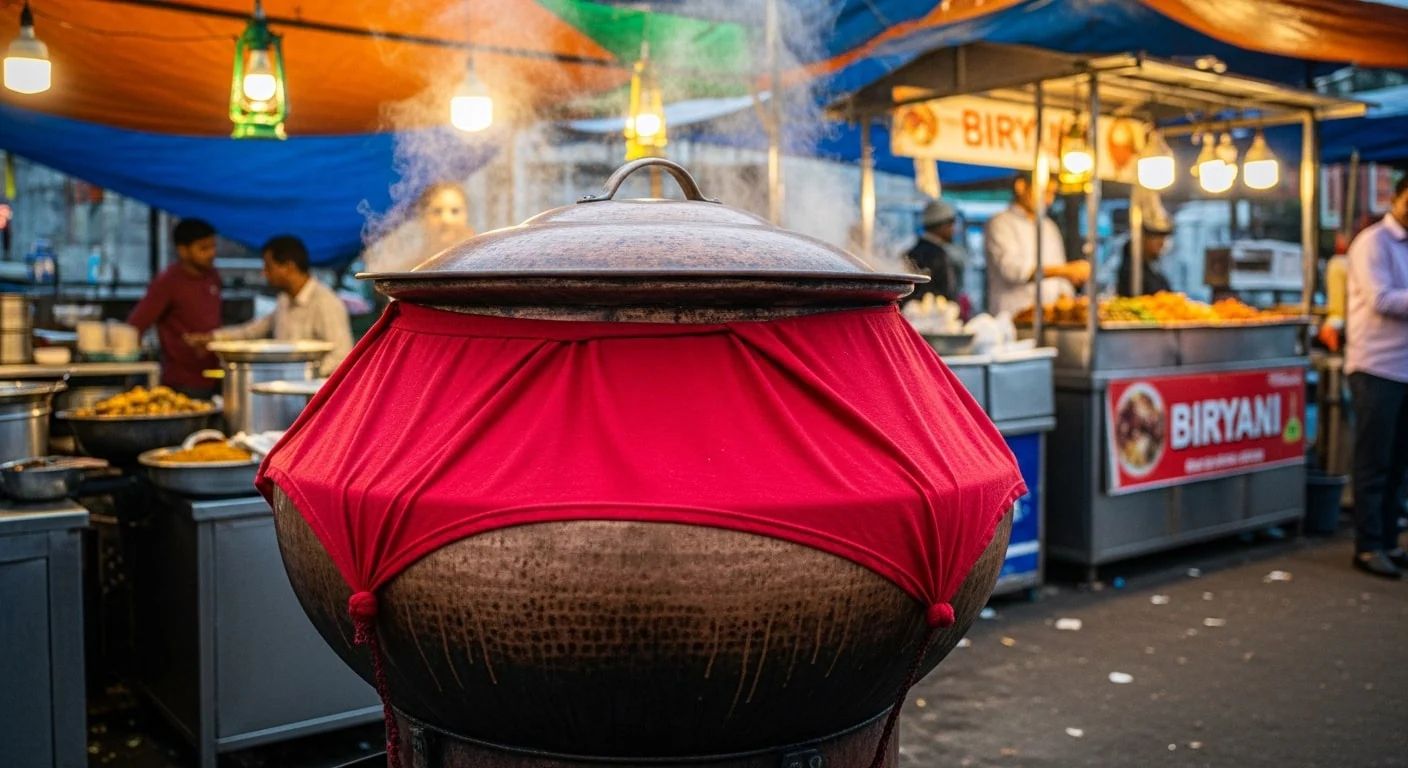How a Simple Red Cloth Became a Symbol of India’s Biryani Culture

November 3, 2025, New Delhi If you’ve ever wandered through a busy Indian street or stood before a steaming biryani stall, chances are your eyes caught the same unmistakable sight — a large metal handi covered with a bright red cloth. It’s a visual that transcends regions, from Hyderabad’s bustling alleys to Lucknow’s grand wedding buffets. The red cloth is so familiar that few stop to wonder why it’s always there. Yet, behind that humble piece of fabric lies a story of practicality, culture, and continuity that has simmered for generations, much like the biryani itself. At its core, the red cloth serves a functional purpose. Vendors began using it to retain heat and control steam, keeping the biryani perfectly warm and moist long after cooking. Cotton traps warmth effectively and prevents dust or insects from contaminating the food — an essential detail for open-air stalls that lack modern insulation or warmers. But over time, this practical step evolved into something richer and more symbolic. The red cloth became a signal — a quiet announcement that something special waits beneath it. Amid the chaos of a market, that vivid splash of red draws attention instantly. It tells passersby, even from a distance, that biryani is being served — fragrant, flavorful, and ready to comfort the soul. For customers, it’s not just a cloth; it’s a cue of trust and familiarity. Then comes the question of color — why red? Red has always held deep meaning in Indian culture. It signifies warmth, celebration, and energy. It’s the color of bridal sarees, temple flags, and festive ribbons — and by extension, the color of spice, heat, and passion. It makes food look more appealing, invoking appetite and anticipation. In that sense, red perfectly embodies what biryani represents: festivity, community, and indulgence. Historically, this practice can be traced back to the Mughal and Nawabi kitchens, where biryani was a dish of royalty. Prepared through the dum pukht technique, these rich and aromatic meals were slow-cooked in sealed pots to trap steam. Once ready, the chefs would drape the pots with elegant cloths — often in deep red or saffron — as a mark of respect and grandeur before serving. When the dish eventually reached common markets and roadside stalls, the silk covers gave way to cotton ones, but the essence of the gesture endured. Today, most vendors follow the tradition without question. For them, it’s an inherited practice that binds them to their roots. “My father used a red cloth, so I do too,” says Rahim, a third-generation biryani seller in West Bengal. “If I use anything else, customers ask if the biryani is fresh.” That sentiment speaks volumes. The red cloth, now woven into India’s biryani identity, connects humble stalls to royal kitchens and everyday meals to age-old customs. What began as simple kitchen wisdom has become a timeless emblem — a blend of practicality, heritage, and emotion. In every puff of steam escaping from beneath that red cloth lies the soul of India’s biryani culture — warm, fragrant, and forever familiar. The Red Cloth That Defines India’s Biryani Culture Ever noticed the bright red cloth covering a biryani pot at stalls or weddings? It’s more than just a cover — it’s tradition, practicality, and symbolism all in one. The cloth keeps the biryani hot, traps the aroma, and protects it from dust. But its red color also stands for warmth, festivity, and spice — everything biryani represents. Passed down from royal Mughal kitchens to modern street vendors, this simple red cloth has become an unspoken promise of flavor, care, and authenticity — a symbol that connects generations through one beloved dish.




